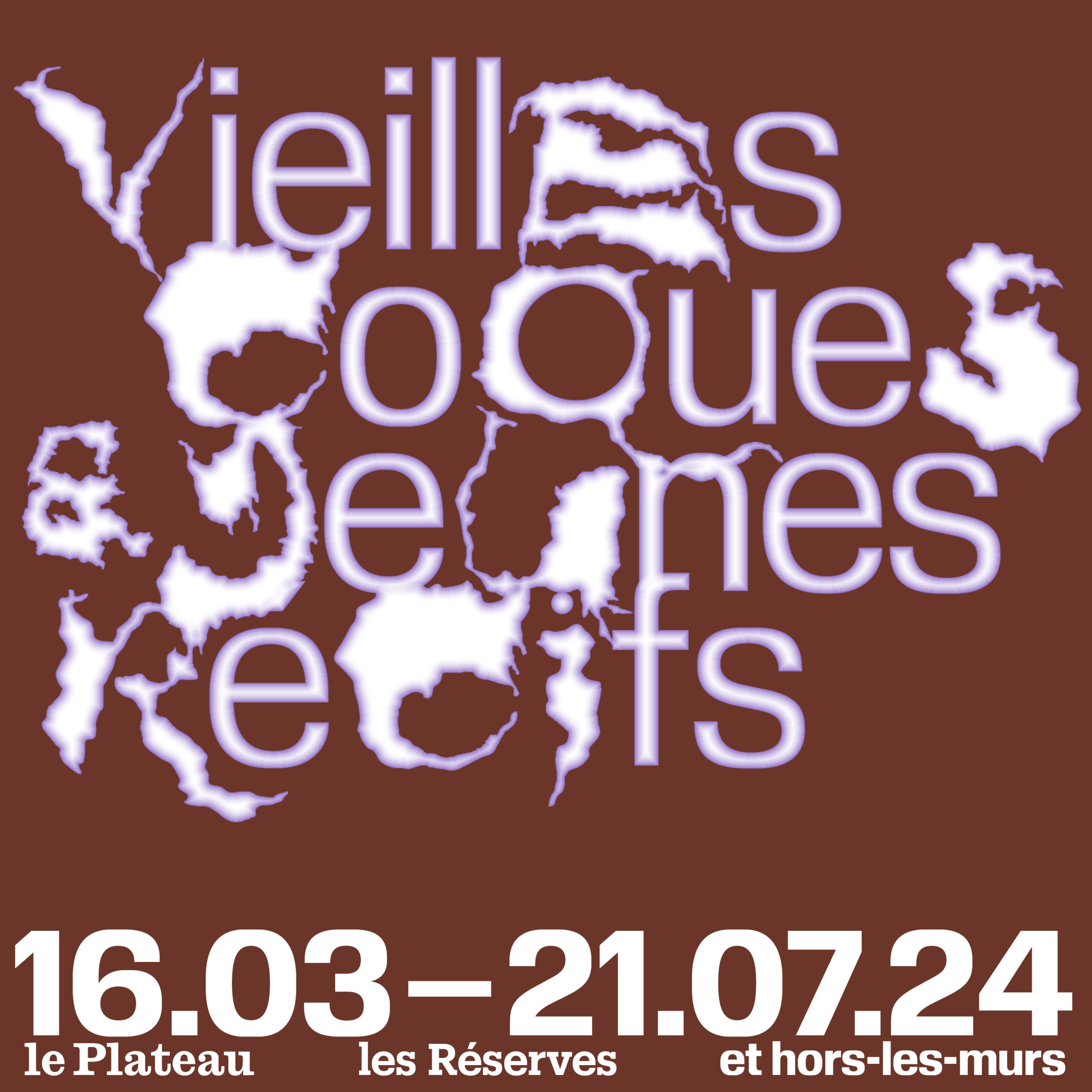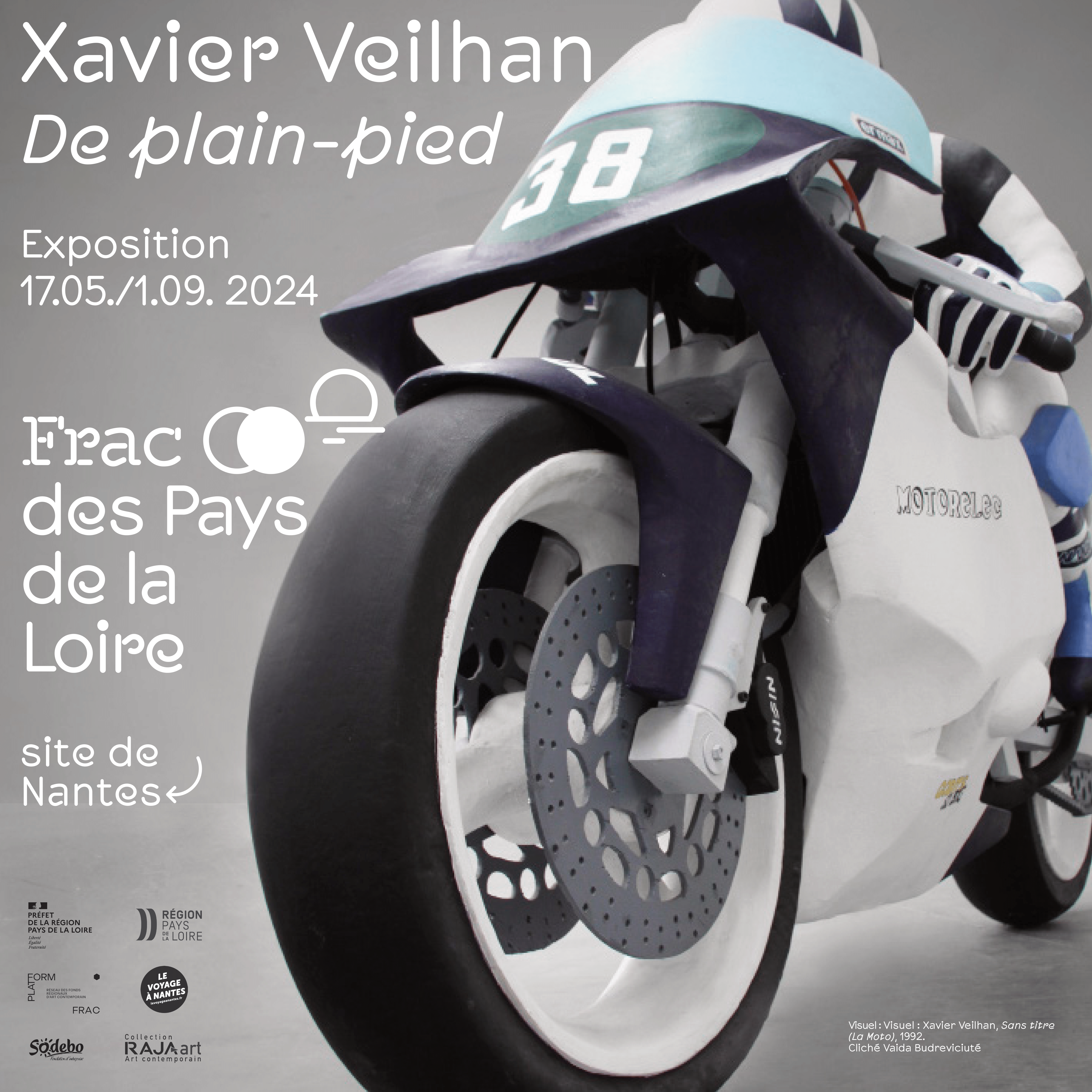Ho Tzu Nyen
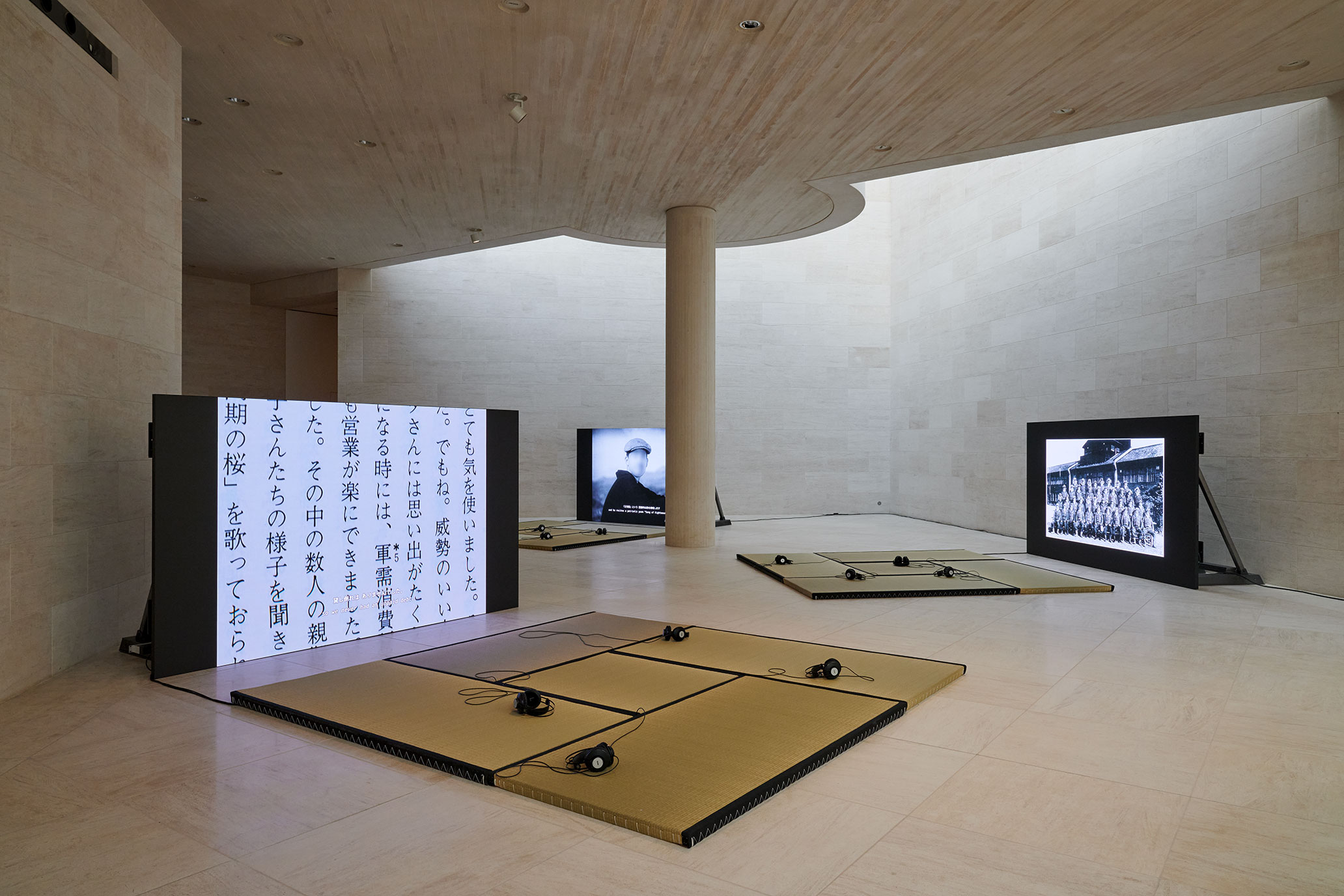
Ho Tzu Nyen
Time & the Tiger
at MUDAM
Among the many video and digital works featured in Ho Tzu Nyen’s exhibition Time & the Tiger at MUDAM, one stands out. It is a small 1880s wood engraving by Heinrich Leutemann, “Interrupted Road Surveying in Singapore, 1835.” In the middle of the jungle, a white gentleman dressed in white and shielding his white skin under a parasol, stands surrounded by a group of darker, half-naked men wearing turban headdresses, exposing their brown skin to the sun. The group is in distress; they share the same fear. A tiger, occupying center stage, is shown in full leap, about to strike.
That was one of the first recorded tiger attacks on humans in Singapore—though technically, no humans were harmed (1). The tiger went for the most valuable object in sight: the theodolite brought by the white man. A symbol of colonization, a theodolite is “a precision optical instrument for measuring angles between designated visible points in the horizontal and vertical planes.” (2) The tiger was protecting its territory.
But the Western mind, shaped in the image of the Christian God took none of this nonsense. Bounties were placed on tigers’ heads. Very quickly, they became extinct. That is what you get when you oppose the imperial machine.

Almost 200 years later, the tiger is channeled through the work of Ho Tzu Nyen. His projects are created, then expanded, then transformed—exploring the entity, symbolism, past, and present of the Malayan Tiger. When I ask him whether he plans to do more, he says it is out of his control; he serves the Tiger.
It is both refreshing and unexpected to hear this. Ho Tzu Nyen is one of the most articulate artists I have met. His works draw from countless sources—history, sociology, anthropology, mythology, philosophy, psychology, optical perception, and more. His discourse is both complex and clear, precise and allegorical. The scholarly foundation of his work carries a certain rigour—to be exact, to remain grounded in historical facts. Yet, despite this constrains, his art exults in creative freedom. Ho’s artworks share a distinctive aesthetic, rooted in a sense of circular infinity, movement—most are films, performances, or theatre—and a deliberate embrace of arbitrary order.
The exhibition at Mudam serves as a mid-career survey of the artist’s work and is structured, as its title suggests, around two concepts: T for Time and T for Tiger. Both derive from Ho’s 2012 overarching project “The Critical Dictionary of Southeast Asia”, an ongoing research platform and archive that explores and questions the unity of Southeast Asia—this geographical region often described as a patchwork of cultures, religions, languages, and politics. Singapore, the artist’s homeland, is its smallest country and arguably the most diverse.
Taking the form of an infinite film, the work consists of found footage shots selected by a randomized algorithm. The moving images illustrate in an unsystematic order an ongoing audio loop that moves through the 26 letters of the English alphabet. A for Animism, A for Anarchy, A for Archipelago, B for Barbarian, B for Border, B for Break, C for Circle, C for Corruption, C for Cosmology, etc.
T for Time, T for Tiger.
The work “T for Time” similarly embraces a logic of plurality, which seems to underpin Ho Tzu Nyen’s worldview. Expanding time beyond its commonly accepted linear trajectory, the artist constructs a space composed of a multitude of digital works—Timepieces—each illustrating time and its varied perceptions. Every screen displays an animated sequence: a sleeping cat, a gong, ouroboros (the snake biting its own tail), a river flow, a heartbeat, pendulums, clocks, etc. By placing over 40 works in the same space and allowing their sounds to overflow, the artist invites the viewer to inhabit multiple temporalities simultaneously. The effect is subtle, leading to a sense of haze.
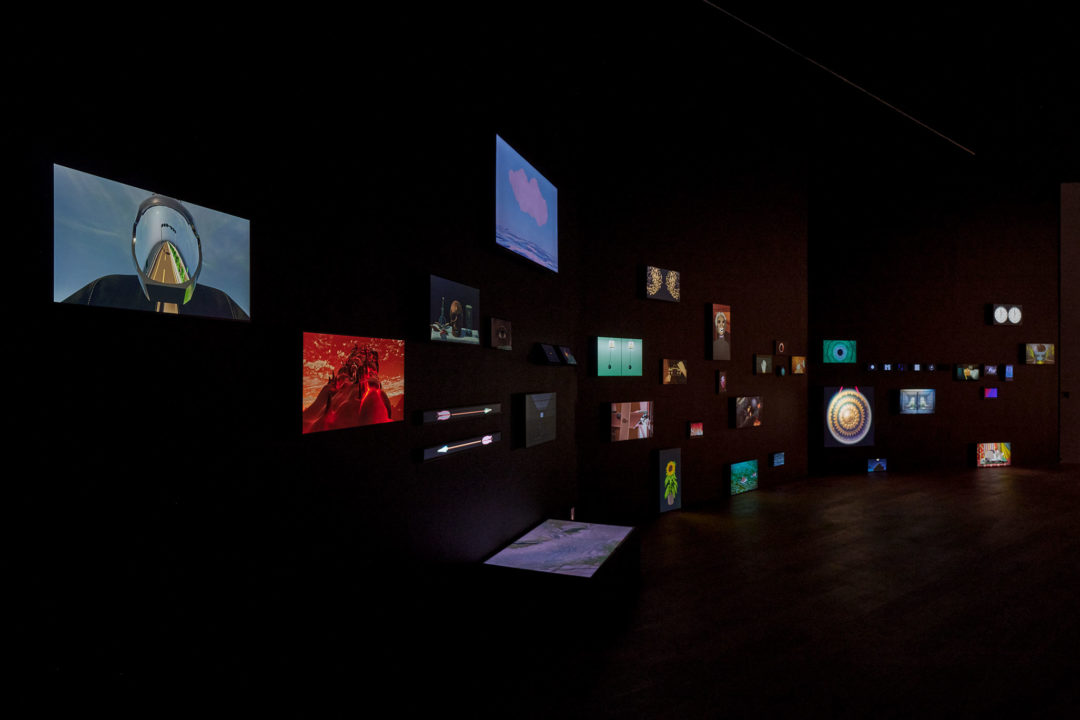
Our perception of time is always subjective. Yet, with the advancement of modernism, time became objective. Since most people earn their living by exchanging a portion of their time for money, the objectification of time ultimately led to its measurement through economic value, regardless of individual needs or capacities. Our time truly became someone’s money.
An adjacent room features the Timepieces in a superimposed double projection. One image is displayed directly on the wall showing mostly original footage of historical and family archives, activist protests, space and nature images. The second projection, showing these same sequences but as an animated film, appears on a see-through screen one meter off the wall. True to Ho’s credo of rejecting singularity, the timeline of the projections is transformed in such way that no one sees the same loop twice. The order shifts, here too, according to a randomized algorithm.
In the foyer, “Hotel Aporia” is an installation composed of four screens, each accompanied by a group of Japanese tatami mats, arranged in a typical 4.5-piece “auspicious”(3) layout. The work invites viewers to sit, grounded. As with the other described works, the images passing across each screen are a tapestry of sequences drawn from archival footage, animated films by Ryuichi Yokoyama, and artistic films by Yasujiro Ozu. Incidentally, Ozu’s indoor shots are often filmed from a lower angle; his characters, like Ho’s viewers, are seated on floor mats.
It was on floor mats like these that the Kusanagi Kamikaze squadron gathered for their last dinner at the Kiraku-Tei hotel in 1945—an event the artist considers the starting point of the project. It was on the same mats, in the same hotel, that the parents of the 23 young men returned after the war to drink, sing and honor their sons. Ho learned of this event while living in Japan and researching the Kyoto school, the philosophical movement that dominated Japanese thought in the 20th century. “Hotel Aporia” emerged as a collection of sequences following narratives that highlight the intersections and divergences between Western and Eastern thought, particularly during World War II, when Japan’s influence (and troops) had a more-than-tangible presence in Southeast Asia.
And so, we come full circle and return to the Tiger. The wood engraving in question also served as inspiration for Ho Tzu Nyen’s work “One or Several Tigers.” In a separate room, two projections face each other, unfolding a duet between CGI rendered figures of George Drumgoole Coleman, Government Superintendent of Public Works and Land Surveyor of Singapore—the white gentleman in the engraving—and the Malayan Tiger. The spectacle, an opera of sorts, plunges us into the heart of the conflict between ancestral power and the mercantile arrogance of a self-centered colonial force.
In Malayan tradition, there exists a unique creature—the weretiger, a liminal figure that channels the spiritual world beyond the rigid constructs of space and time. A human killed by a tiger would become a weretiger, a communicator, a translator between realms. Our Malayan tiger sings “We’re tigers, Weretigers” and I can’t help but think that this majestic creature had no intention whatsoever of granting Coleman such a role.
- Kevin Chua, The Tiger and the Theodolite
hkw.de/tigers_publication - As per https://en.wikipedia.org/wiki/Theodolite
- An “auspicious” layout is used in an auspicious situation, usually implying family gatherings or welcoming guests. The Japanese culture is extremely codified and each participant at such gathering had their own delimited seating spot.
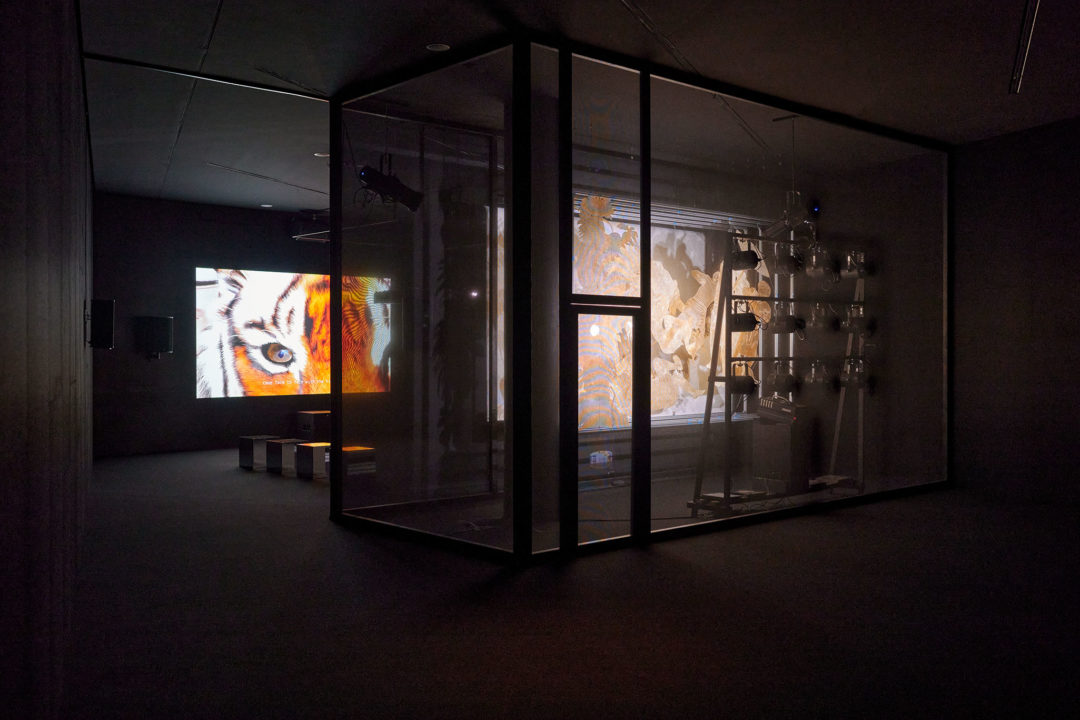
Head image : View of the exhibition Ho Tzu Nyen: Time & the Tiger, 14.02 — 24.08.2025, Mudam Luxembourg – Musée d’Art Moderne Grand-Duc Jean. Photo: Mareike Tocha © Mudam Luxembourg.
- Share: ,
- By the same author: GESTE Paris, The summer of collaboration at CRAC Alsace and CRÉDAC: “L’amitié : ce tremble” and "Tripple Dribble", Jonathan Binet at Balice Hertling gallery, Radek Brousil at Stone Bell House, Prague, Unbound : Performance as Rupture at the Julia Stoschek Foundation, Berlin,
Related articles
Ralph Lemon
by Caroline Ferreira
Hilma af Klint
by Patrice Joly
Plaza Foundation
by Andrea Rodriguez
